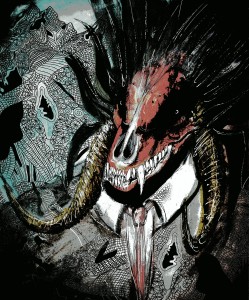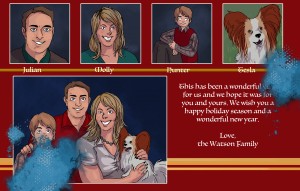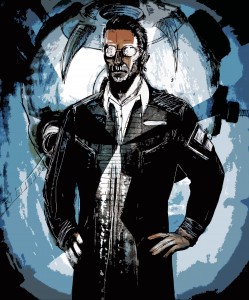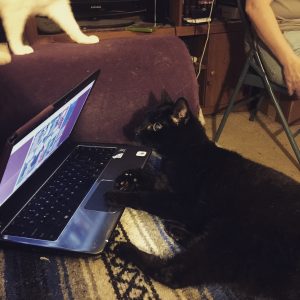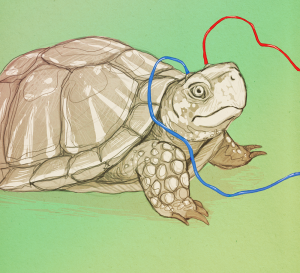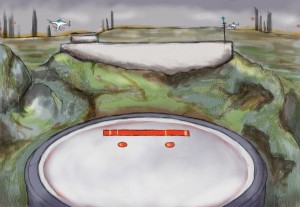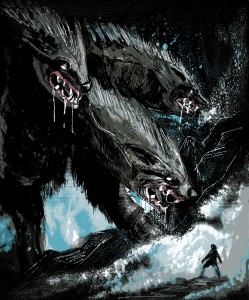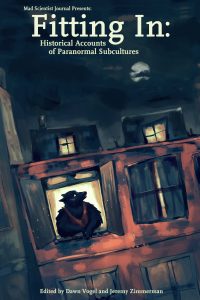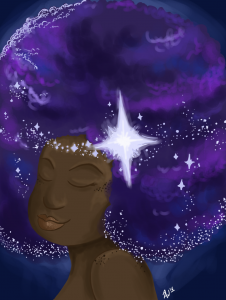An essay by V. Cardigan, as provided by Emma Tonkin
Art by Dawn Vogel
Abstract
The theoretical concept of a provably complete library, generated by an infinitely parallelised random process, is well-known. In this article, I report on the results of a sample implementation of Borel’s well-known “typing monkey” thought experiment. Through analysis and evaluation of our practical findings, I identify best practices, issues encountered, and potential future developments in the field.
Introduction
Ever since the publication of Émile Borel’s contribution to the field of modern librarianship in his well-known 1913 article, “Mécanique Statistique et Irréversibilité,” the construction of a provably complete library (PCL) has been tantalisingly close to humanity’s grasp.
Borel’s pioneering vision described the employment of an infinitely large number of “singes dactylographes,” usually rendered into English as “typing monkeys,” each of which would generate a unique text on his or her individual typewriter. Although the majority of such texts would naturally contain nothing but gibberish, a small subset would consist of all existing (and possible) works of literature. The aggregate works of an infinite set of monkeys would therefore far exceed the reach of copyright libraries, institutions that are entitled to a copy of every book ever published in the host nation. Such a library would also contain valid textual encodings of all possible binary formats, software packages, scripts, and multimedia works. The PCL is a provably complete textual, image, multimedia, and software library.
Borel’s work has generally been dismissed as purely theoretical due to the difficulties inherent in the practical construction of an infinite dataset. In particular, although contemporary computing platforms are able to simulate a series of individual typing monkeys, they do not permit the simulation of the requisite infinite set of typing monkeys in a realistic period of time. In the past, parallelization has failed to significantly relieve this difficulty. The best parallel architectures commercially available today cannot provide the infinite parallelism required by Borel’s Gedankenexperiment.
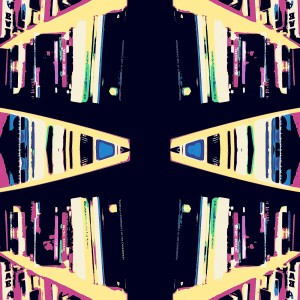
Last year, we in the Information and Library Services department were pleased to learn of the eighteen-billion-pound development of a new infinitely parallel quantum computing (IPQC) facility within our university.
To read the rest of this story, check out the Mad Scientist Journal: Autumn 2016 collection.
Vera Cardigan received a Master’s in Library and Information Science from the University of the West of Peterborough and is a member of the International Library Society’s Experimental Librarianship Interest Group. She is employed as a senior librarian at St Alexander’s University College, formerly Oxford Agricultural Polytechnic.
Emma Tonkin is an engineer with a PhD in computer science and a lingering fascination with classical studies. She is employed in a research project in the sub-basement of a University building. She likes to write fiction and sometimes even manages it on purpose.
Dawn Vogel has been published as a short fiction author and an editor of both fiction and non-fiction. Although art is not her strongest suit, she’s happy to contribute occasional art to Mad Scientist Journal. By day, she edits reports for historians and archaeologists. In her alleged spare time, she runs a craft business and tries to find time for writing. She lives in Seattle with her awesome husband (and fellow author), Jeremy Zimmerman, and their herd of cats. Visit her website at http://historythatneverwas.com.

